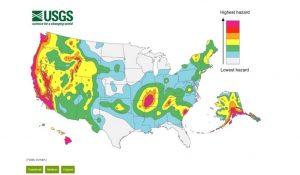January 17th marked the 30-Year Anniversary of the Northridge Earthquake
“What would have happened if the Earthquake struck during normal working hours?”
Fortunately, it was a holiday in 1994 and the notorious Northridge quake struck at 4:31 AM PST. It was a magnitude 6.7 earthquake and the shaking lasted 10–20 seconds. The quake’s epicenter, located in Los Angeles’ San Fernando Valley, delivered a powerful shockwave that caused catastrophic damage and claimed too many lives. The earthquake killed at least 57 people and injured thousands causing widespread destruction. Freeway overpasses and bridges crumbled, while buildings, particularly those in the San Fernando Valley, suffered extensive structural damage.
Can you imagine the destruction if the quake struck during working hours?
In one of the buildings we repaired, it was a severely damaged building due to the quake and upon the initial visit, the pure devastation was alarming. The entire manufacturing and storage facility was annihilated with goods and contents strewn all over as well as heavy HVAC ducting scattered about the floors. It would have been nothing less than a miracle if anyone would have avoided major injury much less survived the quake if struck during operational working hours.
The Northridge earthquake is the most damaging earthquake in US history. It was estimated to cost $13–50 billion in property damage and even more economically. The earthquake damaged many buildings, including hundreds of large steel frame buildings with significant cracking in principal beam connections. Nearly a dozen parking structures collapsed and area hospitals required evacuation due to structural and nonstructural system failures. This was a seismic turning point in Southern California.
The Northridge earthquake proved that building codes needed to be upgraded to make structures more resistant to seismic activity. The current code’s main purpose is life safety and not business continuity. Preparing for earthquakes by performing seismic retrofits can greatly reduce risk. Seismic retrofits of all types of buildings help reduce loss of life and protect real estate assets. For instance, hospitals suffered less structural damage in the 1971 San Fernando earthquake compared to the Northridge devastation.
Imagine if your company suffered this major loss and was not able to operate or produce for months. This amount of business disruption would likely put an end to many companies as well as financial debt not to mentioned risk of loss of life. It is especially important in high-risk seismic activity regions to mitigate risk and perform seismic retrofits to real estate assets. See USGS highest hazard seismic zones for US below:
Saunders Construction has over four decades of experience performing seismic retrofits and structural repairs. We are the seismic solution specialists! For more information, contact us https://saundersseismic.com/contact/. We now service five states, California, Washington, Oregon, Nevada, and Utah.

